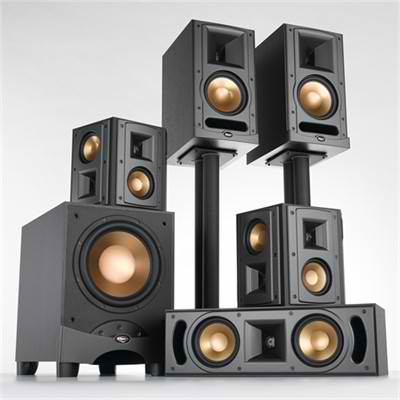You may have a shiny 60-inch LCD television as your new centerpiece, but an equally important component of your home theater system is its sound. Indeed, if you are to maximize the performance of your system, clear, vibrant, and rich audio blasting from your speakers is an absolute must. That’s why here at Hooked Up Installs we have come up with a guide that, hopefully, will help you discover a number of neat home theater sound tips and tricks, and enjoy not just cinematic viewing, but also a perfect listening experience.
Use the menu. Your 5.1 or 7.1 channel speaker system likely comes with some sort of calibration menu that you can access to improve the sound of your speakers. Options usually include: listening to test tones, balancing channel volume, enhancing the lower-frequency or bass effects of your subwoofer, and even measuring speaker sizes and distances. Make full use of this menu, adjust each speaker accordingly, and test the system until the sound is as good as you can get it to be.
Optimize placement. Where you install your speakers is critical in determining how your home theater will sound like. Is audio performance not quite up to par? Don’t buy a new speaker or subwoofer just yet. Instead of spending your way out of your problem, place the speakers right where they should be: center directly in front, and – 45 degrees from it – the left and right speakers, with the left and right surround channels at the back of where you would sit.
Use brackets or speaker stands. Those speakers in between the books on your shelf or under the coffee table aren’t exactly in the best position to provide you quality sound. Get them out of there and install them in the most ideal locations using a stand or a set of brackets. (Of course, it’s best to contact a team of home theater installation professionals to do the job.)
Go digital. Digital decoding technology is widely available today, and it’s made to complement that new flat panel set you just bought. So unless you’re still using a CRT TV, it’s best to integrate digital decoding in your system and enjoy the best today’s audio technologies have to offer.
Leverage Blu-ray. Your Blu-ray player likely comes with its own built-in decoding feature for high-definition audio (like Dolby True HD or DTS-HD Master Audio). This represents some of the latest surround sound enhancement technologies today, so go ahead and connect your system using an HDMI or audio cable.
Test using high-quality recordings. We’ve actually come up with a list of awesome movies for calibrating your home theater. But if you’re testing audio, look out specifically for excellently engineered files (albums or soundtracks) with low compression levels.
Tame the sound crashers. The windows and mirrors that wall your home theater are likely to adversely affect the acoustics in the room. Tame these sound crashers by covering the windows with thick drapes or curtains, and the tiled floors with a carpet. Fluffy or foamy items like throw pillows, cushions, mattress pads, and thickly upholstered sofas also act as tools for enhancing the quality of your home theater sound system.
Use a sound level meter. Sound level meters are originally designed for industrial purposes (for measuring sound levels in, say, construction sites, aircraft facilities, etc.). That doesn’t mean you can’t use them at home. By having your own digital sound level meter, you can conduct high-precision sound measurement, adjust the sensitivity range of your home audio system, and tweak and tweak until you get your home theater sound as perfect as possible.
Upgrade your speaker wires. You may think that a bunch of cables won’t have anything to do with how your system sounds like. But they do. By using sturdier, higher-quality, commercial-grade speaker cables / wires, you’re optimizing the delivery of sound across your home theater system. (For recommendations on thickness, length, material, and connector types, please don’t hesitate to give our friendly team a call.)
Keep your speakers clean and well-maintained. Even the most sophisticated speaker systems in the world will need a bit of proper care and maintenance. So avoid installing them in places where they might be affected by moisture, dust, or sunlight, and spend some time every month or so to clean this and other components of your home theater system.


